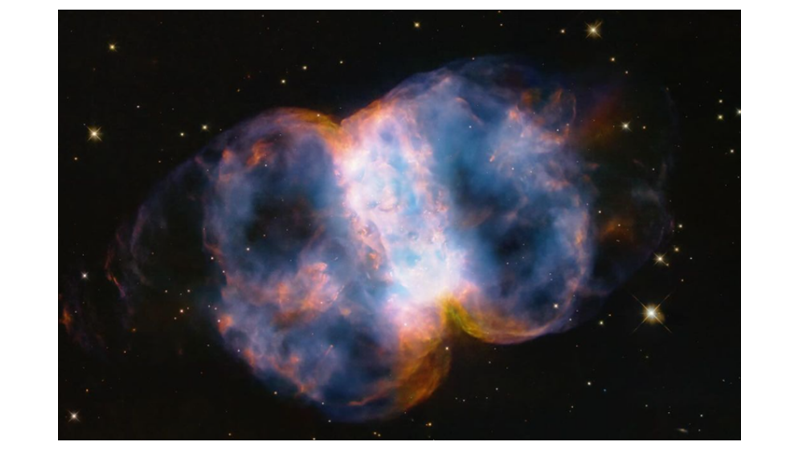Since it was first placed into orbit on 24 April 1990, the Hubble Telescope has made 1.6 million observations of more than 53,000 astronomical objects, helping humanity witness the origins of the universe, the birth and death of stars, and study cosmic phenomena. During this time, Hubble's data has contributed to the creation of more than 44,000 scientific papers.
To celebrate the launch of Hubble, astronomers have captured a spectacular image of the Little Dumbbell Nebula, 3,400 light-years away in the constellation Perseus. The Little Dumbbell consists of an expanding shell of fluid gas, signalling the death of a red giant star that will soon turn into a white dwarf.
In the image, four-pointed pointed golden stars are scattered on a black space background. The nebula in the centre, which covers most of the image, resembles two translucent spheres. These spheres glow with blue, red and orange cloud-like material and are surrounded by pale branches of colour that radiate outwards into space. Where the two spheres meet, the red, blue and orange colours are blocked by a thick, translucent white vertical structure.


 Nielawore
Nielawore









Yorum yazmak için lütfen giriş yapınız